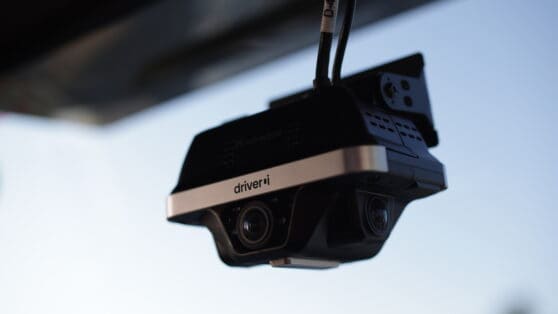Every fleet company has a set of goals that can help improve business operations, boost employee morale, and increase the bottom line. Whether you set your target every quarter or before the year ends, one thing is important: Goals need to be measurable to be considered successful. This is where Key Performance Indicators or KPIs come in.
Wondering what KPIs are and whether you’ve set up the right ones for your fleet? Here we talk about what is KPI in the automotive industry and the important ones that you need to track in your business.
What Are Fleet Management KPIs?
The best way to assess if you’re hitting company goals is to put together fleet management metrics. It’s hard to know whether your strategy is working or not if you don’t track your progress.
Think of KPIs as road signs that tell you whether you’re headed in the right direction. Fleet managers can use fleet management software to gain insights into drivers’ performance and vehicle conditions.
Why You Should Track KPIs
KPI tracking helps managers understand their team’s and individual employees’ progress. Data from a fleet safety platform like Driveri® aids managers in evaluating whether the current strategies are effective in improving productivity, recognizing potential safety issues, and keeping costs under control.
Ultimately, KPI management ensures that everyone is happy–from the driver who completed deliverables on time to the customer who can proceed with business on schedule.
What Are Good KPI Examples?
Before setting your fleet’s KPI, you need to assess what stage your company is in and what you need to improve. It’s hard to set benchmarks when you don’t have a baseline for comparison.
Are you looking to cut down on repair costs for vehicles? Do you want drivers to adhere to the schedule and keep their planned route? How about improving road safety?
Answering these questions can give you an idea of which areas you can benchmark. That said, here are three common benchmarks that your company can use to measure results:
- Efficiency
- Productivity
- Cost
Below, we talk more about these KPI benchmarks and how adding them to your fleet management strategy can help your team.
6 KPIs That You Should Track
Every fleet will have a different set of KPIs that are based on their operations. Perhaps on-time delivery rate is more important to you than budget adherence. Or maybe you want to prioritize driver safety over fuel costs.
However, there are certain standards of performance that every fleet manager should include. Let’s look at some KPIs that can help bring more growth into your company:
1. Efficiency
Do your drivers spend a lot of time driving empty? Are the vehicles often driven off the clock? Gas-guzzling activities can be hard to track without a fleet management tool. An efficiency KPI can help spot irregular driving behaviors that lead to wastefulness. So how exactly do you measure efficiency?
For starters, you can track empty miles. According to Convoy, driving empty miles contributes to higher operational costs. It also affects drivers because they don’t get to earn as much as they usually do. Another thing you can measure is fuel economy. Speeding and idling use more fuel and can be attributed to bad driving habits. As soon as you’re able to identify these issues, you can set up parameters that will help decrease inefficient activities from cropping up again.
2. Cost
Calculating costs associated with running a fleet can be a challenge. How do you reconcile your budget and ensure accuracy? The good thing is that KPI fleet management software can help monitor expenses in real-time–whether it’s tracking fuel consumption, staying on top of taxes and registration, or keeping an eye on parts and labor costs.
From here, fleet managers can create goals (e.g., reducing downtime by 10%) that the whole company can work toward to improve profitability.
3. Maintenance Management
Do trucks in your fleet need regular checkups even if they are working fine? Absolutely. Preventive maintenance ensures that your team completes work orders on schedule. Aside from preventing long downtimes, early detection of potential vehicle problems also curbs unexpected repair expenses.
Before setting servicing schedules, your company needs to identify the type of maintenance your fleet needs (e.g., oil change, fuel inspection, wheel alignment, etc.). Vehicle maintenance differs in the type of tasks that your fleet does.
For example, delivery fleets that spend a lot of time idling will have a different type of maintenance compared to trucking fleets that operate in harsh environments. The latter will have more wear and tear, so a more comprehensive maintenance check is needed.
4. Compliance
Fleet companies are required by law to ensure all vehicles are roadworthy and that drivers are fully trained for employment. Fleet managers need to conduct vehicle inspections, enforce the company’s safety policies, ensure trips are routed in advance and see to it that work schedules are realistic. These things are done on-site. But how do you check compliance when the driver is on the road?
To ensure the productivity and safety of the drivers, many fleet companies use AI to learn more about driver behavior on the road. Fleet safety solutions like Driveri help managers identify areas for improvement as well as recognize good driving behavior.
5. Safety
Safety is a KPI related that’s connected to driver behavior and vehicle maintenance. Speeding incidents, hard braking, crashes, and more can all be measured by using a telematics tool to capture and analyze on-road behavior. This data is reported in real-time and is often published as scorecards to help drivers keep track of their performance.
Part of the safety KPI is training drivers regularly to follow safe driving practices. A safety KPI helps ensure that everyone in the company takes safety seriously. This also helps reduce liability in case of accidents or violations.
6. Vehicle Total Cost of Ownership (TCO)
Aside from monitoring fuel consumption and maintenance costs, fleet managers should consider the true cost of running a fleet. The total cost of ownership (TCO) is the sum of all costs related to owning and operating a vehicle. Whether you’re running a fleet of cabs or trucks, this metric will help you evaluate if the revenue generated is greater than the operational cost. TCO tracking is also useful in creating more cost-efficient decisions (e.g., replacing vehicles versus repairing them).
Final Thoughts
Setting fleet management KPIs help managers identify opportunities for improvement and streamline operations. Before establishing your KPIs, make sure that your goals are measurable and your metrics benchmarked according to industry standards.
Netradyne helps companies see the big picture of running a fleet. Through Driveri, managers and owners can create safe and cost-effective driving procedures for their teams.
Read all about fleet safety 101 in our blog.






